Disheartening as it may seem, it is not uncommon for students to experience bullying, especially at school, where physical proximity and diverse student population can make it hard for authorities to monitor every move.
Bullying, as defined by the Department of Education and the Centers for Disease Control, refers to any unwanted aggressive behaviors by another group of youth or group of youths that involves an observed or perceived power imbalance. This behavior is said to be often repeated multiple times.
More often than not, bullying can inflict harm and distress on the targeted youth. The harm is not limited to the physical either because bullying victims can also suffer from psychological, social, and educational harm.
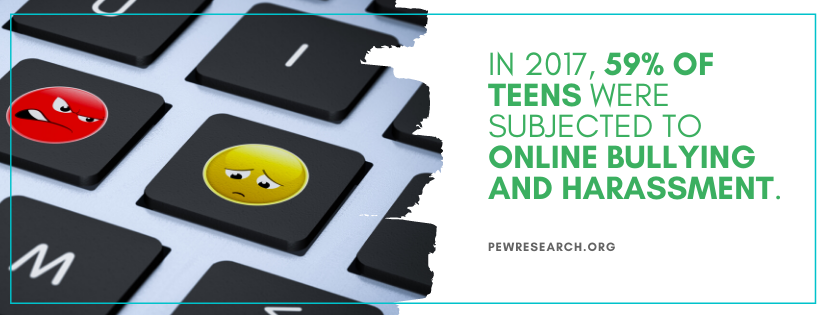
In the United States, bullying is widespread. It is so common that the study finds 1 in every five high school students was reportedly bullied on school property. Bullying reports are highest in middle schools with 28%. College students are not spared either, with 15% bullying reports from their age group.
While bullying usually happens in physical form, this problematic behavior can happen in any number of places, contexts, or locations. The advent of technology and the internet and the prevalence of social media brought bullying incidents into new heights.
Bullying is becoming more common online, including but not limited to, media like email, chat rooms, instant messaging, and social media posts. This type of bullying is generally referred to as cyberbullying.
Use these links to easily explore this article:
An In-Depth Look at Cyberbullying
The Unique Characteristics of Online Bullying
The Effects of Bullying and Cyberbullying on Victims
The Impact of Bullying and Cyberbullying on the Perpetrators
Who are at Risk of Being Bullied?
How Can We Put an End to Cyberbullying?
An In-Depth Look at Cyberbullying
When we talk about cyberbullying, it often encompasses bullying that takes place over varied digital devices such as cellphones, computers, and tablets. It is not only limited to social media, either. There are incidents where bullying happens in various platforms like online forums, gaming communities, and other apps. Some bullies make use of texting or instant messaging.
Cyberbullying can take on many forms, some of the most common include sending, posting, and sharing malicious content about someone else. It can also involve the sharing and revelation of personal or private information to cause embarrassment and humiliation. These often lead to adverse and harmful psychological effects.
According to Pew Research, 59% of teens have been subjected to online bullying and harassment. Most of the bullying victims experience name-calling. Around 42% of them claimed to have been called offensive names online or through instant messaging. Others reported they had been subjected to false rumors on the internet. Some have been the target of physical threats online. Explicit messages and images were also sent to some of the teens without them asking for it. It is also a collective experience for many of them to have their explicit images shared and circulated online without their consent.
Other forms of cyberbullying include but are not limited to:
- Threatening to hurt someone
- Telling someone to hurt or kill themselves
- Posting a mean or harmful video
- Pretending to be someone else to solicit or post personal or false information
- Posting hateful online comments that pertain to race, religion, ethnicity, and other personal characteristics
- Creating a harmful webpage about someone
- Doxing, a form of online harassment that is often used to exact revenge and destroy someone’s privacy by leaking their private information to the public. This may include addresses, social security, credit card, phone numbers, and links to social media accounts
The Unique Characteristics of Online Bullying
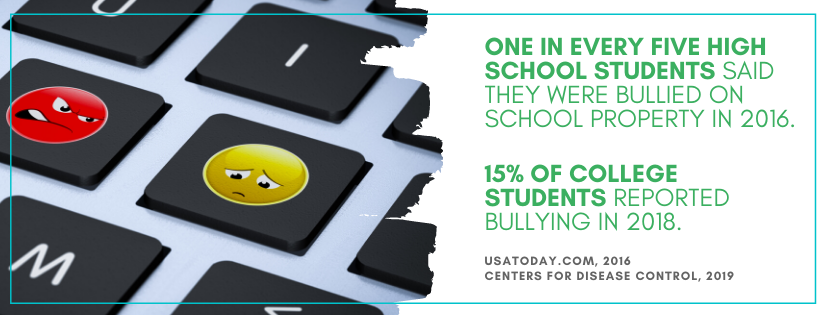
While bullying generally refers to intentional and repetitive hurtful behavior toward a person or group, online bullying has distinguishing elements that set it apart from traditional bullying, mainly because it often takes place online or via a digital device.
Persistent
Since bullies have access to many forms of digital technology, cyberbullying can pretty much take place any time – from morning to evening. It does not only persist in school because cyberbullying can bother victims even when they are at home or in the safety of their community.
Often Undetectable
Parents can sometimes overlook the effects of cyberbullying on their children because this type of harmful behavior is often covert. It can be difficult for them to detect unless they are monitoring their children 24/7. Physical traces like wounds and damaged belongings are absent in cyberbullying.
Cloaked in Anonymity
Cyberbullies find freedom in their anonymity, cultivated by the means to hide behind a device. Some victims would not even be able to identify the perpetrators because bullies remain anonymous. It is easier for bullies to harm and hurt their victims without the fear of being held accountable.
Easy to Spread
Online bullies are capable of spreading damaging information to a broad audience, making the consequences of their actions more dangerous. It can be challenging for authorities to contain and stop its spread.
Physical Detachment
Since most of the bullying happens online, bullies will not be able to see the seriousness of their actions. Technology gives them a chance to stay at a safe distance, not knowing that their words and ill intentions can cause real-life pain.
Permanent
Cyberbullying leads to permanent damage. Information and false rumors spread online are available to everyone everywhere. Anything posted online will leave a trail, posing a challenge for authorities to stem and delete the information once it is already out there.
The Effects of Bullying and Cyberbullying on Victims
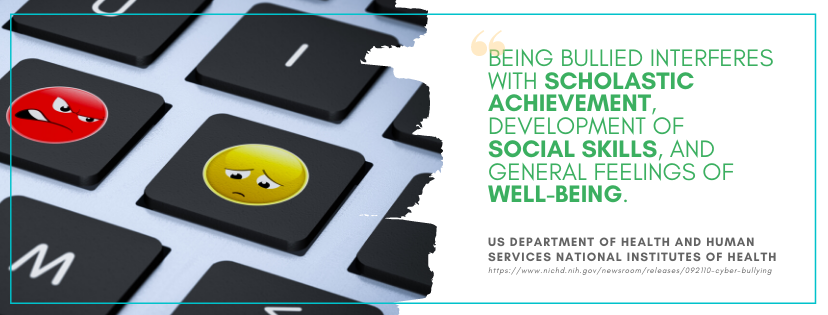
Bullying has detrimental and often long-term effects that can haunt victims for the rest of their lives. Students who have been bullied were found to suffer from psychological, physical, and academic effects. Their negative experiences will weigh them down even after they have left school. They can carry the scars throughout their life, affecting their mindset, self-esteem, and future relationships.
Psychological Effects
Bullying can have lasting psychological effects. These can include depression, anxiety, and low self-esteem. Sometimes, these can also lead to self-harming behavior, alcohol, and drug use and dependence, as well as aggression. Involvement in violence and crime is a possible result. The perpetrators of 12 of 15 school shooting cases in the 1990s were bullied.
Moreover, youth who are subjected to cyberbullying are at a higher risk for depression more than those who are victims of traditional bullying. They experience frequent thoughts of suicide and greater emotional distress, hostility, and delinquency.
Physical Effects
Often evident and immediate, the physical effects of bullying result from a physical attack. This is all too common at schools where students meet face to face. However, the physical effects are not confined to direct physical attacks. Sometimes, these effects can also manifest from the ongoing stress and trauma of being bullied, leading to physical problems over time.
Victims of cyberbullying could develop sleep disorders, including the difficulty of falling asleep or staying asleep. They could experience stomachaches, headaches, heart palpitations, dizziness, bedwetting, and chronic pain and somatization. Bullying can also lead to increased cortisol levels, a stress hormone, which typically takes place after a stressful event. This can impact their immune system and brain activity.
Academic Effects
Bullying can also affect students’ academic performance. It is more likely for them to do poorly at exams and standardized tests. They might participate less in class or even miss, skip, or drop out of school.
The Impact of Bullying and Cyberbullying on the Perpetrators
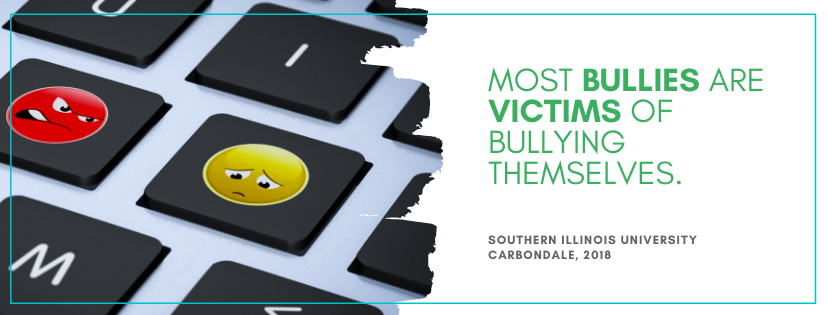
While it is more common for bullied victims to suffer from the effects of bullying, it is also possible for bullies to be affected negatively. The following effects can be just as right for bullies:
- Poor school performance
- Increased truancy risk
- Problems in maintaining social relationships
- Increased risk of substance abuse
- Lesser chance of education and employment
Perhaps, the most lasting ill-effect of bullying on perpetrators is their inability to hold long-term, healthy relationships. They can be abusive to their spouses and children, which can perpetuate a cycle of bullying all over again. After all, most bullies are victims of bullying themselves, as shown by a study conducted by an assistant professor from Southern Illinois University Carbondale.
Who are at Risk of Being Bullied?
Many factors put someone at risk of bullying. Much of these have to do with their immediate environment. Some groups are also more vulnerable to bullying, such as members of the LGBTQ, persons with disabilities, and isolated youths. Here are other risk factors:
- Students perceived to be “different” from their peers. They might be overweight or underweight, wearing glasses or different clothing, being new to the school, or being poor.
- Some are seen as weak, and many are unable to defend themselves.
- There are a lot of bullying victims who are depressed, anxious and have low self-esteem. This is a factor that is often prevalent among college students.
- Students who have fewer friends or less popular are also at risk of being bullied.
Although these attributes raise your chances of being bullied, they do not guarantee it because other factors such as the environment and other circumstances also come into play.
How Can We Put an End to Cyberbullying?
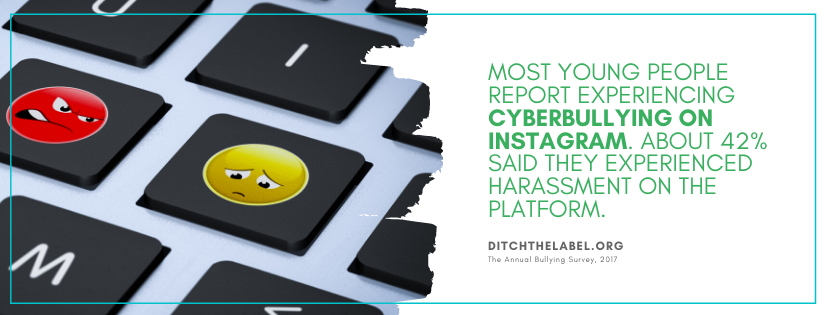
Bullying and cyberbullying do not have simple solutions. There is no foolproof way to handle a bully. However, since the nature of bullying is far more likely to be a sustained attack over a long period, specific measures can be taken to stem its flow and prevent it from happening again.
Students who are bullied are often reminded to stand up against the bullies. They do not have any reason to put up with any kind of bullying. The bulk of responsibilities, however, lies with authorities and parents. This is important because kids and even young adults may find it hard to tell their parents or teachers about bullying.
So, what can parents and other supervising adults do?
Learn to recognize the warning signs.
Students often exhibit telltale signs of being bullied. It is the job of adults to monitor those signs and become vigilant at all times. Some of these warning signs include the tendency of students to withdraw from family, friends, and their usual activities. They may suffer from an unexplained drop in school performance. Sometimes, they may even refuse to go to school or avoid specific group activities.
They are more likely to show changes in their mood, behavior, and sleep and appetite patterns. For victims of cyberbullying, they might be secretive about their electronic activities and can sometimes show signs of being sad, angry, or distressed after being online.
That is why adults need to help stop and prevent bullying. They should keep the line of communication open. When they see the signs, they should not ignore it. Early intervention makes a huge difference.
What about the victims of bullying?
Victims of bullying can also help themselves. If you are a student who is being bullied or you know someone in the same situation, recognize the signs, first of all. Some victims are not aware or unsure why they are being bullied. Other actions that you can take include:
Tell Someone
You need to realize that you should not suffer in silence. When you know that you are being bullied, tell an adult you trust. While you may feel embarrassed or reluctant to report bullying, you should know that it can get worse. Speaking up from the start can nip the harmful behavior in the bud!
College students, especially those who attend online classes who experience cyberbullying, might keep the situation to themselves. Find a way to speak up! Remember that only you can get the help you need. The police and other law enforcement authorities can track down an online bully, so reporting it to relevant authorities is encouraged. You can reach out to your university counselor, trusted professor, or a family member.
Learn to Walk Away
Walking away doesn’t only apply to face-to-face encounters; it is also possible to walk away from online bullies. Ignoring cyberbullies takes away their power. While it might not be easy to do, stepping away from your gadgets is also a good start. You should also know when not to respond or forward a message to someone else. To help you do this, you can try to focus their attention on something you love. It can be playing the guitar, baking cupcakes, reading a favorite book, or taking your dog for a walk.
Report Bullying
Online platforms often provide means for users to report abuse, including cruel or mean comments, targeted harassment, and the spreading of private information. Social media websites, including Twitter and Facebook, allow users to report abuse and advise them to block the accounts of bullies. You can also do this on your smartphones by restricting unknown contacts.
*****